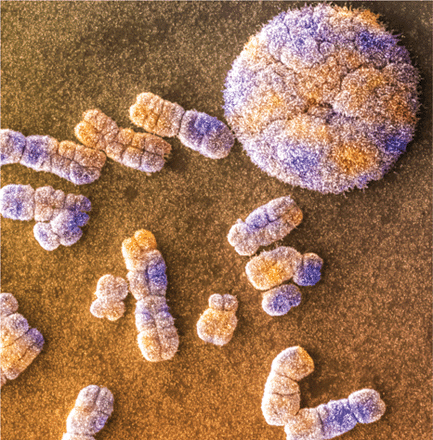November 22, 2019 -- The scientist who developed a new method of illuminating 3D genomic structures, called Dip-C, is awarded the SciLifeLab Prize for Young Scientists by the Science for Life Laboratory in Sweden and the journal Science. The research of the grand prize winner, Longzhi Tan, builds on the work of the Human Genome Project by developing an algorithm to capture diploid chromosome conformation.
The human genome contains nearly three billion base pairs of nucleotides that form a chromosomes, condensed structures comprised of helically wound and bundled nucleotides. If fully stretched, DNA in each nucleus would span over 2 meters in length! Through the efforts of the Human Genome Project, the linear sequence of DNA was determined, yet the 3D structure still remains unclear.

"Obtaining the sequence of the human genome was a landmark achievement, but we were left to unravel how human cells can have different functions by reading the genome differently," said Valda Vinson, deputy editor of Science. "It has become clear that the organization of the genome plays a key role, and [Tan] gives us a new view of how this happens."
The study of chromosomes is further complicated by the diploid nature of our cells, which contains two sets of nearly indistinguishable chromosomes. Indeed, the only differ by less than 0.1%!
"Telling the two copies apart to resolve their 3D structures was previously thought to be an impossible task," said Tan.
In the previously developed technique called chromosome conformation capture (Hi-C) determines chromosome contacts, or artificial linkages, between DNA loci that are distant on the linear genome but nearby in the 3D space, to determine relative positioning of different chromosomes and their interactions. This technique is limited to the study of haploid DNA structures, and has limited spatial resolution.
The new technique developed by Tan, diploid chromosome conformation capture (Dip-C), uses a new whole-genome amplification method called multiplex end-tagging amplification (META) followed by application of an algorithm that allows the scientist to determine parent of origin for each point of contact.
"With our algorithm, we are able to create a beautiful 3D picture of all 46 chromosomes in each cell," said Tan.
With 20,000 bp and 100-nm resolution, Tan was able to zoom in on individual chromatin loops of chromosome, to visualize fractal organization of DNA and observe structural differences on chromosomes, matched to differences of alleles that differ in gene expression. This showcases the important connection between structure and function.
To demonstrate this theory, investigated the specialized neurons sense orders by expressing specialized olfactory receptors (ORs), which are present on multiple chromosomes. Tan showed that OR genes barely interact in normal cells, but that in olfactory neurons, the OR genes converge to for a large, multichromosome aggregate, used to silence genes for mice's "one-neuron-one-receptor" approach to smell.
"Every cell has a different 3D genome structure. We found that, simply by knowing this structure, one can tell its cell type and, consequently, its biological functions," said Tan. The ability to "structure-type" single cells puts Dip-C on a growing list of single-cell "omics" tools useful for charting a comprehensive cell atlas.
About the SciLifeLab Prize
The SciLifeLab Prize, now in its seventh year, recognizes promising early-career scientists who conduct groundbreaking life-science research and includes a grand-prize award of $30,000. It is organized by SciLifeLab (Science for Life Laboratory), a national center for advanced molecular life sciences in Sweden and the journal Science. The Prize is also made possible through the generous support of the Knut and Alice Wallenberg Foundation - the largest private financier of research in Sweden - which primarily grants funding in natural sciences, technology and medicine. "We congratulate the prize winners and look forward to welcoming them to Stockholm in December to deliver their prize lectures, take part in festive award ceremonies as well as engage in scientific discussions with the SciLifeLab community", says Olli Kallioniemi, Director of SciLifeLab.
Do you have a unique perspective on your research related to genomics? Contact the editor today to learn more.
Copyright © 2019 scienceboard.net


